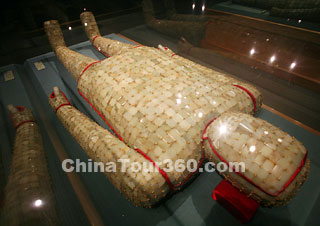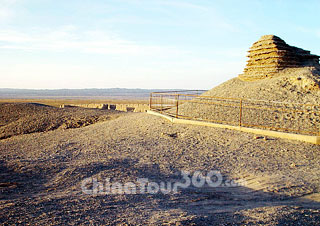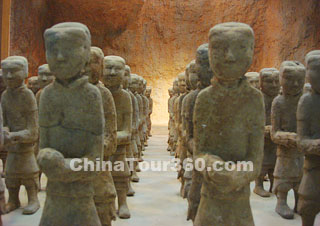
People of the Han Dynasty
At the end of the Qin Dynasty (221-206 BC), Liu Bang, the leader of a peasant uprising, conquered the Qin's capital-Xianyang City (near Xian City of Shaanxi Province) in 207 BC, putting an end to the autocratic Qin and turning a new chapter on Chinese history. After four years of Chu-Han War between Liu Bang and and his rival Xiangyu (between two uprising leaders), Liu Bang finally won the war and established his reign - Han Dynasty in 202 BC.
The new dynasty was divided into two periods: the Western Han (202 BC-9AD), the capital of which was Chang'an (the present Xian in Shaanxi Province) and the Eastern Han (25AD-220AD), the capital of which was Luoyang (the present Luoyang in Henan, southeast of Shaanxi Province).
Titled as 'Han Gaozu' (the first emperor of the Western Han), Liu Bang took measures to modify the incomplete parts of the previous dynasty and economic development reached its peak point when 'Han Wudi'-Liu Che (the great grandson of Liu Bang) reigned. The great feudal unification was achieved. However, in 9AD because of the chaos of the political situation, the imperial relative Wang Mang crowned himself the emperor which indicated the end of the Western Han Dynasty. Wang Mang reigned for a short period of time because of his impractical reforms.
In 25AD, another peasant uprising leader Liu Xiu-'Han Guangwudi' established his reign in Luoyang and the regime of the Eastern Han Dynasty began. During his reign, the wise emperor Liu Xiu created another economic and political boom after Han Wudi-Liu Che. At the last period of the Eastern Han Dynasty, the corrupt reign triggered the Huangjin Peasants' Uprising in 184. While the government was suppressing the Huangjin Uprising, the country was torn by warlords (including Cao Cao and Yuan Shao, two renowned strategists), with each warlord dominating a region. This indicated that the overthrow of the Eastern Han Dynasty was at hand.
|
|
![]() Great Achievements
Great Achievements
During the Han Dynasty, intellectual, literary, and artistic endeavors revived and flourished. The most famous historian in Chinese history, Sima Qian (145 BC - ?) was born in this dynasty, whose classic- 'Shiji' (Historical Records) provides a detailed chronicle from the time of the legendary emperor Xia to that of the emperor Han Wudi (156 - 87 BC). Achievements were also made in science and technology, specifically paper and porcelain, two of the great Chinese inventions, date back to the Han Dynasty. The famous Silk Road, the path for caravan traffic to export Chinese silk to the West, was exploited and formed into shape in this period.

Jade Garment of the Han Dynasty
The Han Dynasty was often titled as 'the second unified empire in China'. On the basis of the unification achieved by Emperor Qin, diversiform cultures were integrated, which laid the foundation for the formation of today's Han culture. It was during this period that the Han ethnic group radicated itself as the core nation of China and their later civilization consolidated the Han people's dominant position in Chinese history.
![]() Go to the Three Kingdoms Period
Go to the Three Kingdoms Period









